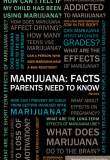Introduction
Drug overdose deaths involving prescription opioid pain relievers have increased dramatically since 1999. Concerted federal and state efforts have been made to curb this epidemic. In 2011, the White House released an interagency strategy for Responding to America’s Prescription Drug Crisis. Enacting this strategy, federal agencies have worked with states to educate providers, pharmacists, patients, parents, and youth about the dangers of prescription drug abuse and the need for proper prescribing, dispensing, use, and disposal; to implement effective prescription drug monitoring programs; to facilitate proper medication disposal through prescription take-back initiatives; and to support aggressive enforcement to address doctor shopping and pill mills and support development of abuse-resistance formulations for opioid pain relievers.
Improvements have been seen in some regions of the country in the form of decreasing availability of prescription opioid drugs and a decline in overdose deaths in states with the most aggressive policies (Johnson et al., 2014). However, since 2007, overdose deaths related to heroin have started to increase. The Centers for Disease Control and Prevention counted 10,574 heroin overdose deaths in 2014, which represents more than a fivefold increase of the heroin death rate from 2002 to 2014 (CDC, 2015).
In an effort to combat the intertwined problems of prescription opioid misuse and heroin use, in March of 2015 the Secretary of Health and Human Services announced the Secretary’s Opioid Initiative, which aims to reduce addiction and mortality related to opioid drug abuse by (HHS takes strong steps, 2015):
- reforming opioid prescribing practices
- expanding access to the overdose-reversal drug naloxone
- expanding access to medication-assisted treatment for opioid use disorder
The relationship between prescription opioid abuse and increases in heroin use in the United States is under scrutiny. These substances are all part of the same opioid drug category and overlap in important ways. Currently available research demonstrates:
- Prescription opioid use is a risk factor for heroin use.
- Heroin use is rare in prescription drug users.
- Prescription opioids and heroin have similar effects, different risk factors.
- A subset of people who abuse prescription opioids may progress to heroin use.
- Increased drug availability is associated with increased use and overdose.
- Heroin use is driven by its low cost and high availability.
- Emphasis is needed on both prevention and treatment.
References
- Centers for Disease Control and Prevention (CDC). Number and age-adjusted rates of drug-poisoning deaths involving opioid analgesics and heroin: United States, 2000-2014. National Vital Statistics System, Mortality File. http://wonder.cdc.gov/. Reviewed December 9, 2015. Accessed December 10, 2015.
- HHS takes strong steps to address opioid-drug related overdose, death and dependence [news release]. Washington, DC: U.S. Dept. of Health and Human Services; March 26, 2015. http://www.hhs.gov/news/press/2015pres/03/20150326a.html. Accessed October 8, 2015.
- Johnson H, Paulozzi L, Porucznik C, Mack K, Herter B. Decline in drug overdose deaths after state policy changes – Florida, 2010-2012. Morbidity and Mortality Weekly Report (MMWR). Atlanta, GA: Centers for Disease Control and Prevention; 2014.
Get this Publication
- PDF (843KB)
- ePub (63KB)
- Kindle (169KB)
- Online Only
Research Reports
This series of reports simplifies the science of research findings for the educated lay public, legislators, educational groups, and practitioners. The series reports on research findings of national interest.








